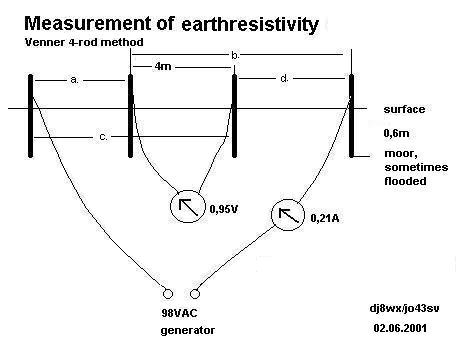D
J 8 W X
JO43SV
Longwave
site
earthresistivity

The resistivity or specific
resistance is often expressed in terms
of the resistance existing between
opposite faces of a cube one centimeter on a side (Ohm per cm cube), in which
case it is termed the volume resistivity and corres-ponds to the length l expressed in cm and the aera A in
square cm. E.g. microOhm per cm cube at 20dgrC for copper has 1.724
(quotation Radio Engineers`s Handbook p.27).
In practice I use instead of <cm
cube> the <m cube>.
So the unit for resistivity or
specific resistance is Ohm/m. The symbol is the greek letter p.
p = r * A / l
(r =resistence, A = area, l = length of the
object under test).
On condition that the distances between the
adjacent rods ( l =4m) are equal, the
above formula is ok.
If not: you have to insert instead of
4 the result of the formula
1(one) / ( 1/a. - 1/b. - 1/c. + 1/d.)
The rods for the tests are alu pipes
of 150mm diameter.
back to